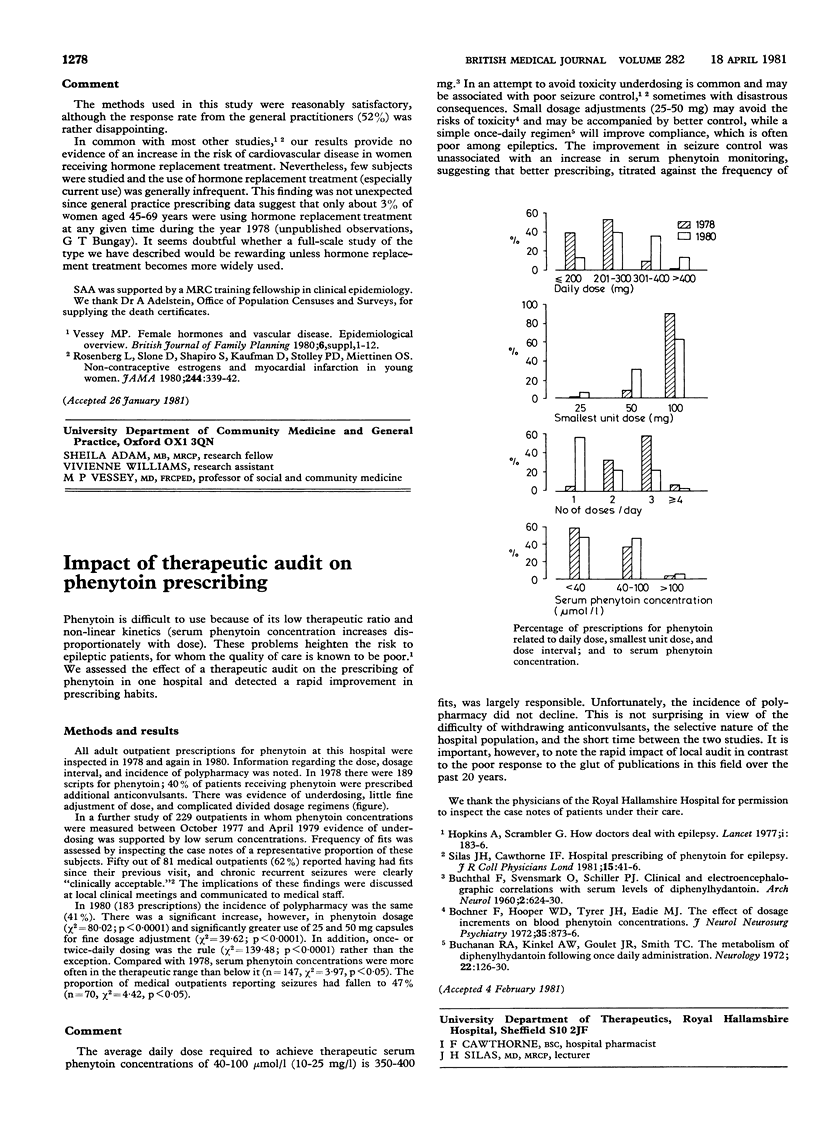Full text
PDFPage 1278

Selected References
These references are in PubMed. This may not be the complete list of references from this article.
- BUCHTHAL F., SVENSMARK O., SCHILLER P. J. Clinical and electroencephalographic correlations with serum levels of diphenylhydanotin. Arch Neurol. 1960 Jun;2:624–630. doi: 10.1001/archneur.1960.03840120030004. [DOI] [PubMed] [Google Scholar]
- Bochner F., Hooper W. D., Tyrer J. H., Eadie M. J. Effect of dosage increments on blood phenytoin concentrations. J Neurol Neurosurg Psychiatry. 1972 Dec;35(6):873–876. doi: 10.1136/jnnp.35.6.873. [DOI] [PMC free article] [PubMed] [Google Scholar]
- Buchanan R. A., Kinkel A. W., Goulet J. R., Smith T. C. The metabolism of diphenylhydantoin (Dilantin) following once-daily administration. Neurology. 1972 Feb;22(2):126–130. doi: 10.1212/wnl.22.2.126. [DOI] [PubMed] [Google Scholar]
- Hopkins A., Scambler G. How doctors deal with epilepsy. Lancet. 1977 Jan 22;1(8004):183–186. doi: 10.1016/s0140-6736(77)91777-9. [DOI] [PubMed] [Google Scholar]
- Silas J. H., Cawthorne I. F. Hospital prescribing of phenytoin for epilepsy. J R Coll Physicians Lond. 1981 Jan;15(1):41–44. [PMC free article] [PubMed] [Google Scholar]


